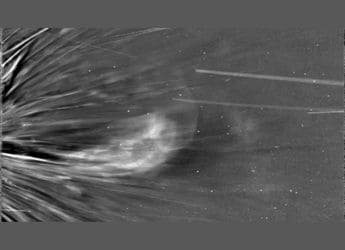- Home
- Cameras
- Cameras Features
- Photography 101: Debunking the megapixel myth
Photography 101: Debunking the megapixel myth

Try fitting a hundred people in a space meant for fifty. They may all fit, but everyone would be very uncomfortable, won't they? Similarly, when too many pixels get packed into a sensor the size of a fingernail, the pixels aren't able to capture light optimally. Of course, when the light is aplenty and the sensor sensitivity is low (ISO 400 or less), one might get great images. But once we hit the 'low light' stage of the day and the sensitivity needs to be bumped up in order to capture a photo, we end up with a 'hot mess' of red and blue pixels.
The reason for this is that the conventional sensor in point-and-shoot cameras is of a fixed size (with an area of just a little over 1 cm) and there are only so many megapixels one can pack into that area without compromising image quality. The tradeoff in the megapixel war is between detail and quality. At the lower end of the spectrum, you get great image quality but not enough detail. As you crank up the megapixels, the level of detail captured goes up, but the image quality goes down. The optimal resolution range for a point-and-shoot sized sensor lies between 9 and 14 megapixels.
More megapixels mean better detail in images, larger prints, and also gives you greater control over image quality when you crop it. However, camera manufacturers realize that in order to by-pass the limitation imposed by the current sensors, only one of two things could solve the problem - either an increase in sensor size (something that would drastically increase the cost of cameras) or redesigning the sensor altogether in order to make it more efficient.
Since a larger sensor meant venturing into DSLR territory, manufacturers felt it best to work on the current sensor design. To this end, Sony created their first 'backside illuminated sensor'. A conventional sensor is designed like the human eye, with the lens in front, followed by a wire matrix and the photodiodes at the back. This design causes some of the light hitting the sensor to reflect off the surface, allowing lesser light to hit the photosite (light collecting pixels on the sensor). The backside illuminated sensor handles this problem by placing the photosite above the wiring matrix, eliminating the reflections caused by the same and therefore, improving light transmission by almost 40%.
This bump in performance now allows manufacturers to pack in up to 20 megapixels (so far) without compromising image quality not only in normal lighting conditions (day light, mid-day) but also in conditions where the light levels start to dwindle (sunset, or dimly lit rooms). So when you're out to buy a new point-and-shoot, it would be a better idea to invest in a camera with a backside illuminated sensor (denoted by BSI or BSI-CMOS).
Don't judge a camera or specially, a sensor by just the number of megapixels. The sensor type/ quality are much more important.
Watch out for more articles in the Photography 101 series.
Get your daily dose of tech news, reviews, and insights, in under 80 characters on Gadgets 360 Turbo. Connect with fellow tech lovers on our Forum. Follow us on X, Facebook, WhatsApp, Threads and Google News for instant updates. Catch all the action on our YouTube channel.
Related Stories
- Samsung Galaxy Unpacked 2025
- ChatGPT
- Redmi Note 14 Pro+
- iPhone 16
- Apple Vision Pro
- Oneplus 12
- OnePlus Nord CE 3 Lite 5G
- iPhone 13
- Xiaomi 14 Pro
- Oppo Find N3
- Tecno Spark Go (2023)
- Realme V30
- Best Phones Under 25000
- Samsung Galaxy S24 Series
- Cryptocurrency
- iQoo 12
- Samsung Galaxy S24 Ultra
- Giottus
- Samsung Galaxy Z Flip 5
- Apple 'Scary Fast'
- Housefull 5
- GoPro Hero 12 Black Review
- Invincible Season 2
- JioGlass
- HD Ready TV
- Laptop Under 50000
- Smartwatch Under 10000
- Latest Mobile Phones
- Compare Phones
- OnePlus 15R
- Realme Narzo 90x 5G
- Realme Narzo 90 5G
- Vivo S50 Pro Mini
- Vivo S50
- OPPO Reno 15c
- Redmi Note 15 5G
- Redmi Note 15 Pro 5G
- Asus ProArt P16
- MacBook Pro 14-inch (M5, 2025)
- OnePlus Pad Go 2
- Poco Pad M1
- Just Corseca Skywatch Pro
- Honor Watch X5
- Acerpure Nitro Z Series 100-inch QLED TV
- Samsung 43 Inch LED Ultra HD (4K) Smart TV (UA43UE81AFULXL)
- Asus ROG Ally
- Nintendo Switch Lite
- Haier 1.6 Ton 5 Star Inverter Split AC (HSU19G-MZAID5BN-INV)
- Haier 1.6 Ton 5 Star Inverter Split AC (HSU19G-MZAIM5BN-INV)

















